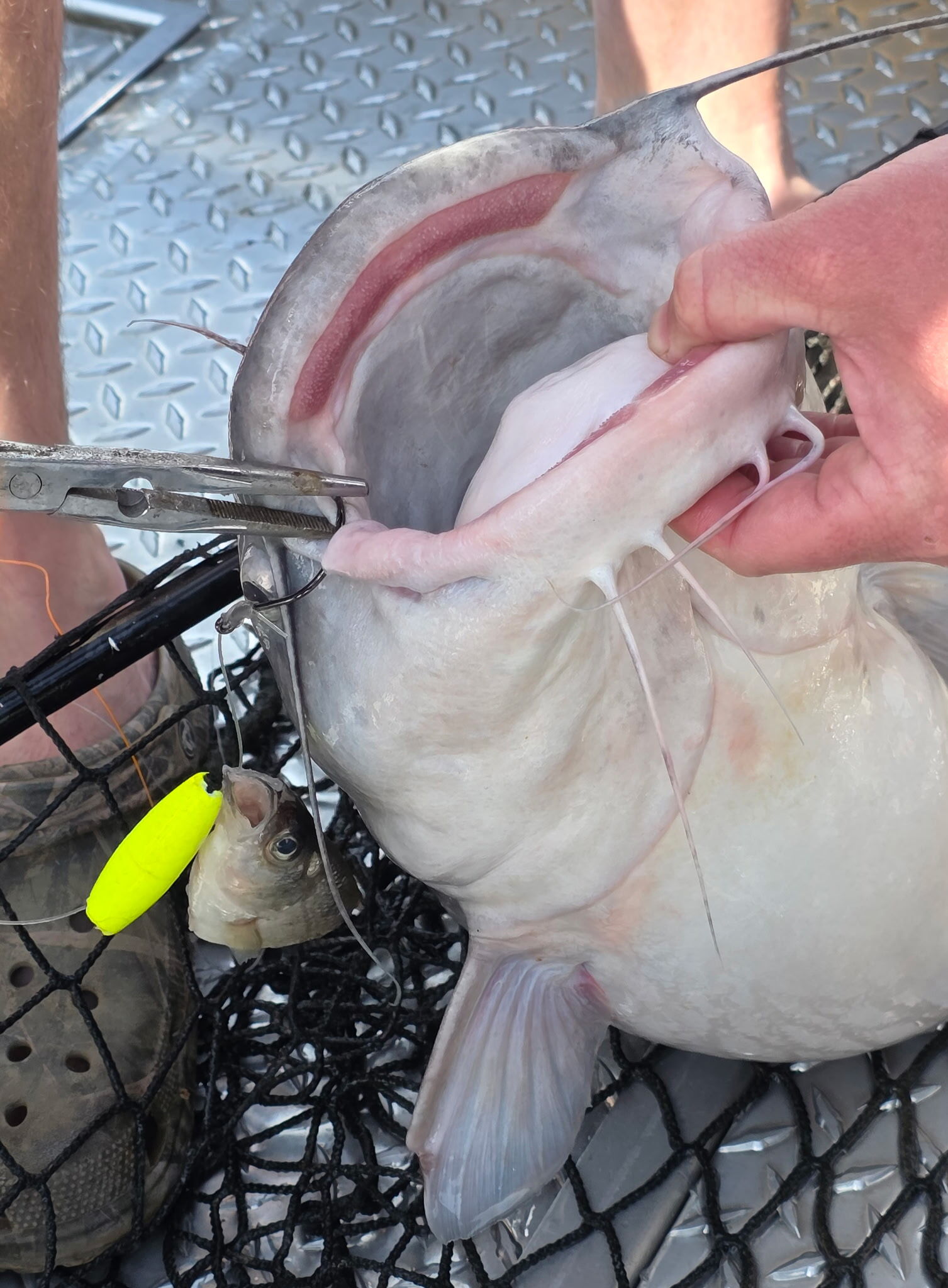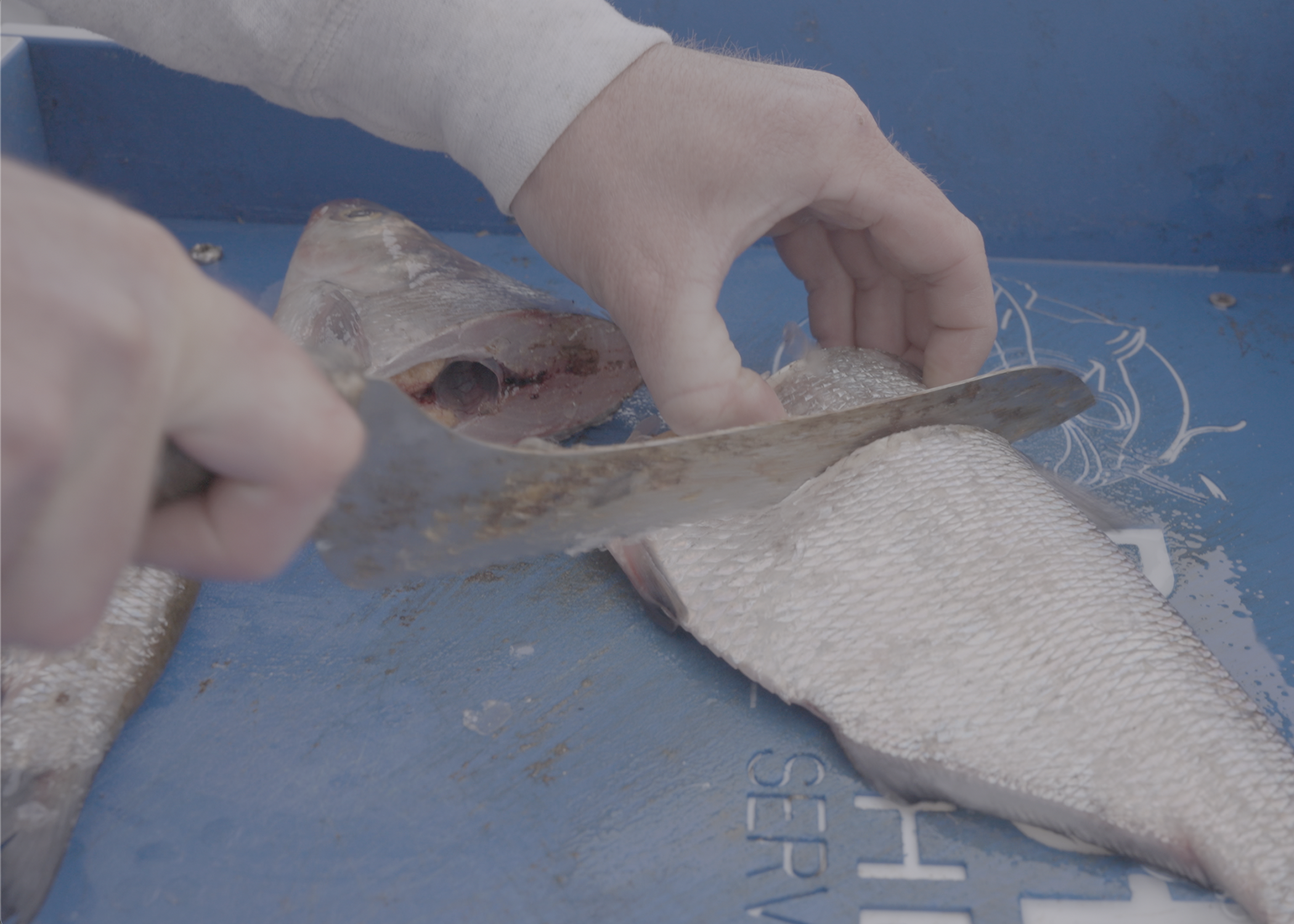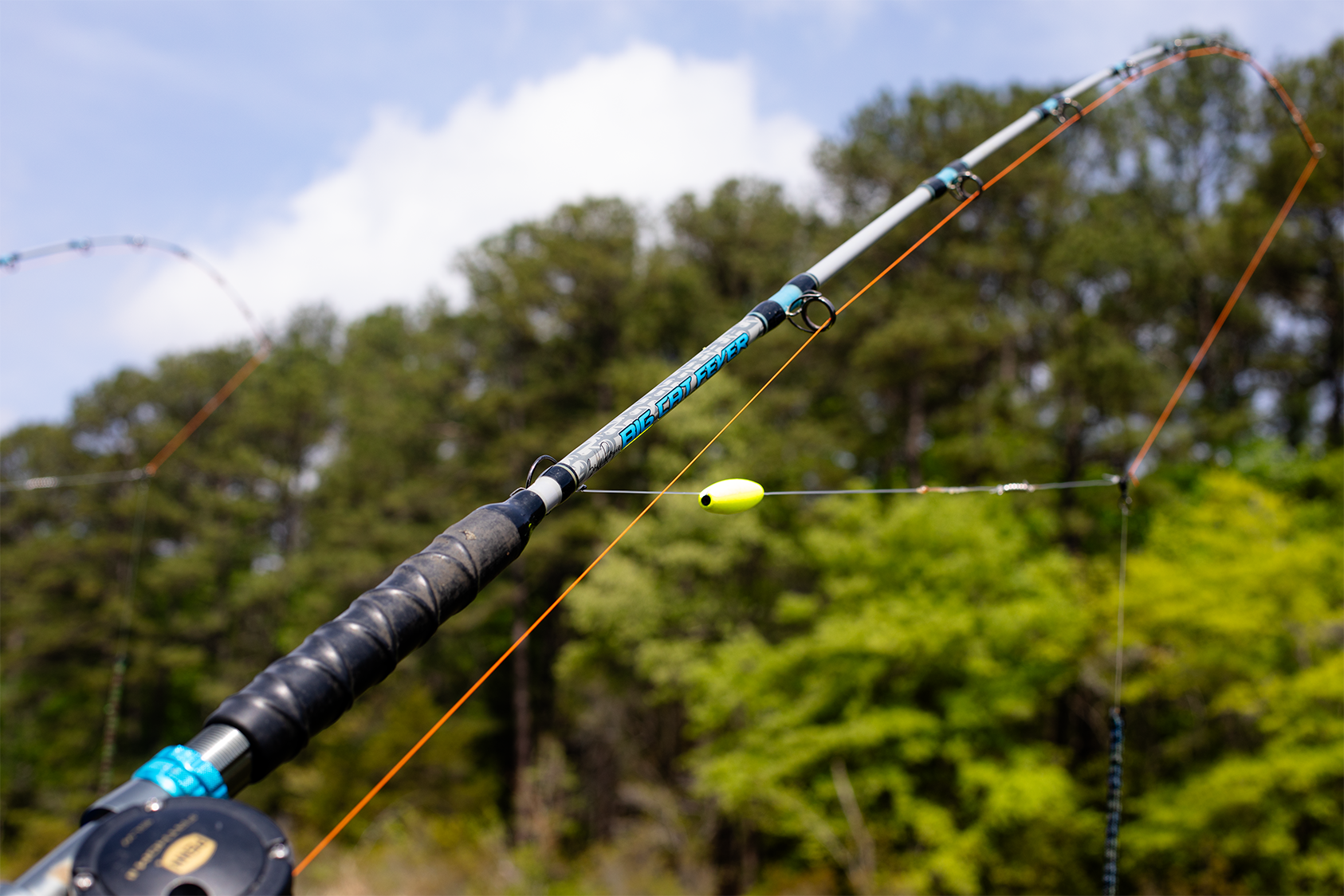Best Catfish Bait and Techniques for Every Situation
By: FishUSA Staff
October 22, 2025
Plenty of catfish anglers swear by a beat-up carton of chicken livers, and there’s no denying they catch fish. But if you want to up your odds, boost your numbers, or stick a heavyweight blue, chicken liver isn’t always the best play. Do you know which bait—and which rig—shines for a flathead tucked under a ledge? What about the right choice for blues staging at a creek mouth? Or the easiest way to pile up channel cats for a weekend fish fry? That’s what this guide is for. Below, you’ll find clear picks, simple rigs, and when to use each bait so you can fish smarter and catch more.
Plenty of catfish anglers swear by a beat-up carton of chicken livers, and there’s no denying they catch fish.
But if you want to up your odds, boost your numbers, or stick a heavyweight blue, chicken liver isn’t always the best play.
Do you know which bait—and which rig—shines for a flathead tucked under a ledge? What about the right choice for blues staging at a creek mouth? Or the easiest way to pile up channel cats for a weekend fish fry?
That’s what this guide is for. Below, you’ll find clear picks, simple rigs, and when to use each bait so you can fish smarter and catch more.

Table of Contents
Quick glance at the best bait for catfish:
- Chicken Livers - Best for Smaller Catfish in Ponds and Lakes
- Crawfish - Best for Catfish Near Heavy Cover
- Live Shad - Best for Large Flathead or Blue Catfish
- Cut Bait - Most Versatile
- Nightcrawlers - Best for Eating-Size Channel Catfish
- Punch and Dip Baits - Best for Channel Catfish in Moving Water
Best Bait for Catfish: Reviews and Explanations
Chicken Livers - Best for Channel Cats in Still Water
Chicken livers catch fish because they bleed scent fast. Channel cats follow that plume, especially in lakes, ponds, and slow pools where current will not strip the bait off your hook. The downside is softness. Livers tear on the cast and slide on the shank if you do not secure them well. They also fade with time; the scent drops after the first few minutes and you must rebait to keep the bite steady.
Use fresh or lightly aged livers. If you need more firmness, salt them a few hours before the trip. Keep portions small so the hook point stays clear. A compact bait stays on longer and hooks cleaner than a fist-sized wad.
Recommended Technique
Lift the bait a few inches off the bottom so the scent spreads. A slip float helps you do that in still water. Rig a sturdy treble or a circle-style liver hook, thread a narrow strip of liver, and wrap with light bait thread to lock it down. Set the float stop so the bait hangs 2–6 inches above the mud. Cast to windblown banks, creek mouths, and ledges, then reset with a fresh piece every 10–20 minutes.
Crawfish - Best for Flathead and Blue Catfish in Heavy Cover
Crawfish give you movement, vibration, and a natural scent that flatheads cannot ignore. Big fish key on crustaceans along riprap, timber, and rock shelves. Live craws wave and kick hard, which helps cats track the bait under cover. Even dead craws work when you crack the shell to release scent.
Recommended Technique
Hook live craws through the tail meat from bottom to top so they swim and kick. Use a strong octopus or circle hook (size will depend on size of craw used) for big fish and adjust size down for smaller waters. Fish a simple slip-sinker rig with a 12–24 inch leader and just enough weight to pin the bait in place beside the cover, not inside it. Drop at the edge of laydowns, undercut banks, and ledges. Keep the rod loaded and the drag set; strikes are sudden and tight to the wood.
Live Shad - Best for Large Catfish
Live shad gives off flash, vibration, and a strong baitfish scent. Blues and flatheads hunt by feel as much as smell, and a struggling shad rings every dinner bell. Size the bait to the fish: palm-sized shad for trophies, 2–4 inch shad for steady action. In warm water, live shad outproduces cut. In cold water or strong current, cut shad can equal or beat live due to a stronger scent trail.
Recommended Technique for Shad
Lip-hook or tail-hook the shad so it swims. Use a three-way rig when you want a fixed position near the bottom: main line to three-way, 12–24 inch dropper to a sinker, and 18–36 inch leader to the hook. In moderate current, switch to a slip-sinker rig and let the shad roam. Keep the hook point clear, and re-bait when the shad tires. If you miss short hits, bridle the bait or step down a hook size to improve penetration.
Nightcrawlers - Best for Eating-Size Channel Catfish
Nightcrawlers are simple, cheap, and deadly. A writhing bundle leaks scent and moves enough to draw fish in low light or stain. They shine on small rivers and farm ponds where cats feed shallow at dusk and dawn. Worms also excel when the water is cold and fish want an easy meal.
Recommended Technique
Thread two to four large crawlers onto a baitholder or small treble, leaving tag ends to wiggle. Suspend under a slip float so the bait rides just off the bottom or above grass. In current, switch to a Carolina rig with a 12–18 inch leader and a 1/2–1 oz sinker. Cast upriver, let the rig settle, and tighten to slight tension. Rebait often; fresh worms outfish washed-out bundles.
Punch and Dip Baits - Best for Channel Catfish in Moving Water
Punch and dip baits excel because they stick to the hook and leak a strong scent trail that channels can track in current. The paste fills fibers on a dip worm or sponge and releases as the rig swings. These baits are messy but fast, and they shine below riffles, behind wing dams, and along outside bends where scent spreads.
Recommended Technique
Use a dedicated dip worm or a treble wrapped with sponge. Push the hook deep into the tub and pull out slow to coat the fibers. Rig below a slip float in snaggy water or on a slip-sinker rig over clean sand. Keep the bait cool so it stays thick. Re-dip every 10–15 minutes or after a fish. Short leaders—8–14 inches—hold the bait in the scent lane and reduce snags.
Cut Bait - Most Versatile
Cut Bait is the most versatile bait for all species of catfish. Fresh cut shad, panfish, or whatever the natural forage of your local waterway is disperses scent and calls fish in from great distances.
Recommended Technique
Cut bait can be fished on the bottom, drifted, under a slip float, or on any other popular style of catfish rig. Big baits have more potential to catch big fish. Use large pieces of bait if targeting giant blues or flatheads and smaller pieces for channels. Rebait often to maintain the freshest scent possible

Bait 101: Know Your Catfish to Pick Your Bait!
Better bait choices start with how each species feeds and where it holds. Catfish carry small swim bladders and live near bottom, and they track prey by smell and vibration. Use scent to draw fish from distance and use vibration to trigger big predators.
Neutral buoyancy: Channel, blue, and flathead catfish sit low with little effort. They use current breaks, ledges, and holes. Lift baits slightly off bottom so fish can find them fast and so scent travels.
Olfactory dominance: Catfish detect tiny scent changes. Strong scent helps in stain; subtle natural scent helps in clear water. Fresh bait matters. Replace soft baits before they wash out.
Blue catfish: Blues are active hunters. They favor live or fresh cut baitfish and respond to vibration. Use shad and skipjack where legal. Fish current seams, ledge edges, and confluences.
Channel catfish: Channels key on scent and forage volume. They eat worms, dip baits, livers, and small baitfish. Use stink in moving water and worms or liver in still water.
Flathead catfish: Flatheads prefer live, lively offerings. They ambush from cover and respond to a strong kick. Use live shad, sunfish (where legal), or crawfish placed tight to wood and rock.
Check out our full guide on What Do Catfish Eat?

Final Thoughts
No single bait solves every bite. Match the bait to the species, the spot, and the conditions. Use livers and worms to stack channels. Use live shad to tempt big blues. Use crawfish to pull flatheads from heavy cover. In current, lean on punch and dip baits to spread scent. Keep hooks sharp, keep baits fresh, and keep the bait a few inches off bottom. Do that, and you will put more catfish on the bank and more fillets in the fryer.
Shop Catfishing Gear

